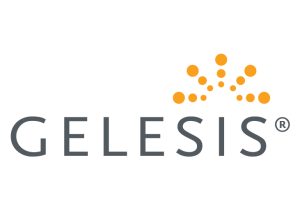
Elliott Smith, Partner at Winston & Strawn LLP
Successful SPACs need transaction advisors with SPAC deal-making experience. Often the best acquisition targets are growth companies rather than distressed assets. And while some SPAC IPOs have approached a billion dollars, huge SPACs can encounter challenges in finding a viable target that’s appropriate in size. That’s according to Elliott Smith, Partner at Winston & Strawn LLP, who participated in IPO Edge’s SPAC in Action! – a SPAC Roundtable Featuring Four Experts, available in full form here. Mr. Smith has advised clients in SPAC transactions including New Frontier Corporation, Netfin Acquisition Corp., WillScot Corporation, Target Hospitality Corp., and Limbach Holdings, Inc. Mr. Smith also says that SPACs can be a faster, cheaper, and easier avenue to becoming a public company than traditional IPOs, but also face their own unique challenges. The full interview is below.
Elliott M. Smith focuses his practice on corporate and securities law. Elliott advises clients on a wide variety of capital markets transactional matters, including IPOs, follow-on offerings and private placements of debt and equity securities. Elliott has particular experience representing SPACs and their sponsor teams in IPOs and back-end business combinations. Elliott also advises public company clients on corporate governance matters and compliance with the federal securities laws.
IPO Edge: How has the warrant feature on SPACs evolved and where do you see it going?
Mr. Smith: Way back in the 1990s, SPACs issued units consisting of one share and two warrants, one of which was struck in-the-money, meaning the strike price was below the per-unit IPO price. The in-the-money warrant functioned like an immediate capital raise following the closing of a business combination, but created a lot of dilution to stockholders which put pressure on the stock price. In the 2000s, SPAC IPO units evolved to typically include one in-the-money warrant. Towards the end of that cycle, around 2008, SPACs starting issuing units with one share and one warrant which was struck out-of-the-money.
These days, SPACs issue units in their IPO for $10.00, and the units include a share and a warrant (or a fraction of warrant). The warrants have an exercise price of $11.50 per share. Some repeat sponsor teams or sponsors affiliated with well-known private equity funds are able to leverage their deal-making track record in order to reduce the number of warrants issued as part of the units to one-half or even one-third of a warrant. By reducing the warrant coverage (i.e., the number of shares issuable upon exercise of all the warrants), these sponsors can market their SPACs as more attractive vehicles to target companies and investors as compared to other SPACs that have more warrants outstanding, since the former represent less potential dilution to stockholders upon completion of the business combination.
The warrants are a necessary sweetener in order to bring investors into a SPAC’s IPO, but can be unattractive to potential investors in the stock later on after a business combination because of the overhang. Over the years SPACs have tried to mitigate this by eliminating or ‘cleaning up’ the warrants at the time of the business combination or shortly thereafter, usually through amendments to the warrant agreement that effectively convert the warrants into cash and/or shares. In terms of the future, warrants will likely always be part of a SPAC’s IPO units in one form or another, and I don’t see SPAC units including less than one-third of a warrant anytime soon.
IPO Edge: How do you convince investors to take fewer warrants with their IPO shares?
Mr. Smith: It’s really a function of investors’ regard for the quality of the sponsor team and their track record and the investors’ perception of their ability to find a good target business and complete a business combination. Top-tier sponsor teams that generate a lot of investor interest in their IPOs can offer less favorable terms (i.e., less warrants). First-time sponsor teams rarely can get away with including less than a full warrant in their SPAC units. And when the market slows down, even repeat sponsors will sweeten their IPOs with additional warrant coverage in order to get the IPO sold.
IPO Edge: What are the key ingredients in getting a SPAC IPO to work?
Mr. Smith: Frankly, in recent years we’ve seen a lot of first-time sponsor teams able to complete IPOs, which makes it look like it’s not too difficult to raise a SPAC if the sponsors are willing to provide favorable terms to IPO investors, such as overfunding the trust account or providing significant warrant coverage.
That said, we have seen some IPOs downsize or get pulled due to investor skepticism of teams that come in to SPACs who have not been involved in public deals or growth equity transactions before, like distressed asset investors, or even successful executives who want to do a SPAC because they like the look of the potential returns but don’t have much of a track record for deal making. The SPAC product is really best suited to growth equity stories where the right combination of a savvy sponsor and a solid target business generate investor interest. Distressed assets and value transactions have generally not fared so well with SPACs.
IPO Edge: Some SPACs have recently raised several hundred million dollars in their IPOs. Can they keep growing? What are the remaining issues?
Mr. Smith: In the past few years the size of SPAC IPOs has increased, in some instances to nearly a billion dollars. But oddly enough there are challenges with big SPACs. Generally, in order to mitigate the dilution from the founder shares and warrants, a target business should be 3-4x the value of the SPAC’s trust account. Finding a target business with valuation of $2+ billion can be challenging for SPACs. Companies that size often don’t need some of the things a SPAC offers and can just go do a traditional IPO if desired. So the pool of target companies can be smaller for big SPACs and we’ve had some sponsor teams ask whether it’s possible to reduce a SPAC’s size after the IPO, which is not really possible. As a result, depending on the industry in which a SPAC is focused, we see repeat sponsors opting to raise SPACs in the $200-$400 million range for maximum flexibility to look for a target 3-4x its size, or sometimes larger. If needed, SPACs can scale up for larger deals by raising additional capital at the time of the business combination.
IPO Edge: What kind of advantages do combinations with SPACs have over traditional IPOs?
Mr. Smith: It can be faster, easier, and often cheaper to go public through a SPAC than a traditional IPO. The traditional IPO process typically takes 9-18 months. A SPAC business combination can get done in four months.
With SPACs, there’s greater flexibility regarding deal structuring, marketing materials and communications with investors. Target sellers can take more cash off the table than is otherwise possible in a traditional IPO. SPAC marketing materials can include projections, which is rare for IPOs. There is also flexibility on timing. In an IPO, if the market is not there, the deal often will need to be pulled and the company is back to square one. With SPACs, the transaction terms can be re-cut to be more favorable to investors, additional capital can be brought in through a PIPE or debt financing if needed, and these changes can be made in real time during the marketing process right up until the closing. In an IPO, those kinds of changes would need to be pushed through a Form S-1 and would likely delay the SEC review process, so that’s another advantage for SPACs.
One potential downside of all that flexibility with SPACs is that sponsors and targets can get deals done even if the transaction is not well received by the market. That can lead to real challenges for the post-closing company. If too many public investors redeem at the time of the business combination, the stock will be thinly traded which can make it hard to raise additional capital. It can be challenging for post-SPAC companies to attract institutions to invest in the secondary market if there is low trading volume in the company’s stock.
Another thing to remember is that with a traditional IPO, the Company is typically selling a minority stake in the company to the public, so the potential to be oversubscribed can be higher. In a traditional IPO, the offering size can be calibrated to investor demand and the underwriters can ensure there is healthy aftermarket trading in the stock. With a SPAC, particularly the large ones, sponsors have to turn over all the outstanding stock of the SPAC, which can soak up all the demand in the market make for choppy trading following the closing.
IPO Edge: What about limitations on SPACs and can they be improved?
Mr. Smith: The product itself is inherently flexible to accommodate all types of transactions. It’s really about the sponsor team and the kind of target business that they bring to the market. If a SPAC doesn’t bring a good target business to its shareholders, then it doesn’t matter what the warrant coverage is or if the founders are giving up some of their founder shares, public stockholders will redeem their shares and the stock price is going to suffer. On the other hand, we’ve seen SPACs that have a full warrant do a deal that is well received and they are able to withstand the overhang issue and create value for investors post-closing. So it’s really a function of the quality of the transaction, as well as the target management team’s ability to execute on its growth plan.
That said, there are headwinds for SPACs. One is perception. People continue to view SPACs as high risk. Unfortunately, there are several examples of deals that have gone south after closing, or people remember 2008 when several SPACs liquidated with no deal. Unfortunately, with each business combination that gets done and the stock price tanks, it’s a ding on the SPAC product, which isn’t really right but it’s about the perception.
Some think that SPACs have a tendency to overpay when time is running out for them and they need to find a deal. There’s probably some truth to that, but again, if a sponsor team and target company’s sellers understand the product and the process and are focused on positioning the company to perform post-closing, then I think those negative factors can be overcome.
Lastly, we’ve heard some sponsors lament that their banks don’t ‘show up’ for them to market the business combination with the same energy compared to a traditional IPO. That may be because of how the deferred underwriting fee gets allocated within the bank, and so there probably is room for improvement there that would help back-end deals get executed successfully.






